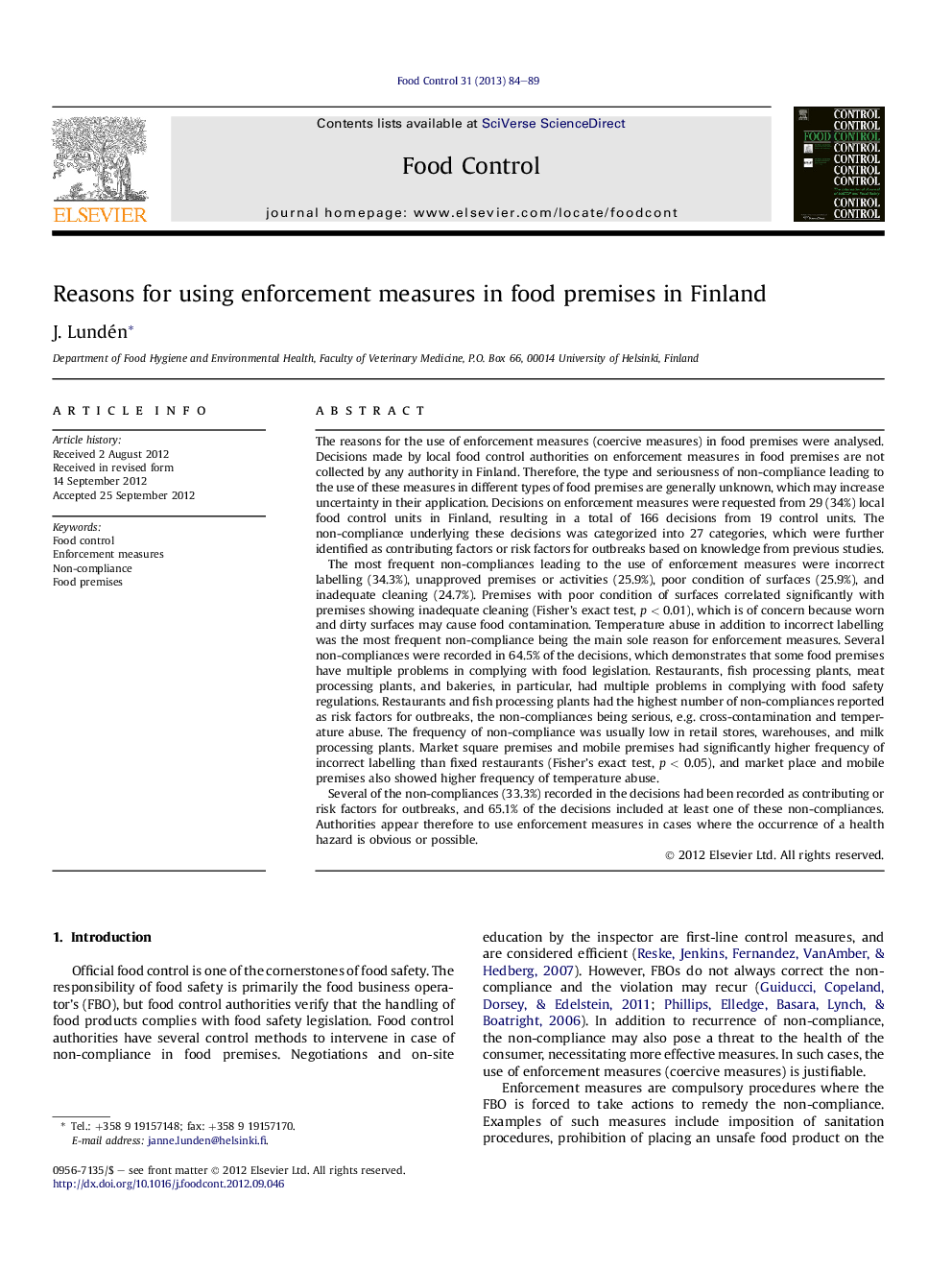| کد مقاله | کد نشریه | سال انتشار | مقاله انگلیسی | نسخه تمام متن |
|---|---|---|---|---|
| 6392781 | 1330443 | 2013 | 6 صفحه PDF | دانلود رایگان |
The reasons for the use of enforcement measures (coercive measures) in food premises were analysed. Decisions made by local food control authorities on enforcement measures in food premises are not collected by any authority in Finland. Therefore, the type and seriousness of non-compliance leading to the use of these measures in different types of food premises are generally unknown, which may increase uncertainty in their application. Decisions on enforcement measures were requested from 29 (34%) local food control units in Finland, resulting in a total of 166 decisions from 19 control units. The non-compliance underlying these decisions was categorized into 27 categories, which were further identified as contributing factors or risk factors for outbreaks based on knowledge from previous studies.The most frequent non-compliances leading to the use of enforcement measures were incorrect labelling (34.3%), unapproved premises or activities (25.9%), poor condition of surfaces (25.9%), and inadequate cleaning (24.7%). Premises with poor condition of surfaces correlated significantly with premises showing inadequate cleaning (Fisher's exact test, p < 0.01), which is of concern because worn and dirty surfaces may cause food contamination. Temperature abuse in addition to incorrect labelling was the most frequent non-compliance being the main sole reason for enforcement measures. Several non-compliances were recorded in 64.5% of the decisions, which demonstrates that some food premises have multiple problems in complying with food legislation. Restaurants, fish processing plants, meat processing plants, and bakeries, in particular, had multiple problems in complying with food safety regulations. Restaurants and fish processing plants had the highest number of non-compliances reported as risk factors for outbreaks, the non-compliances being serious, e.g. cross-contamination and temperature abuse. The frequency of non-compliance was usually low in retail stores, warehouses, and milk processing plants. Market square premises and mobile premises had significantly higher frequency of incorrect labelling than fixed restaurants (Fisher's exact test, p < 0.05), and market place and mobile premises also showed higher frequency of temperature abuse.Several of the non-compliances (33.3%) recorded in the decisions had been recorded as contributing or risk factors for outbreaks, and 65.1% of the decisions included at least one of these non-compliances. Authorities appear therefore to use enforcement measures in cases where the occurrence of a health hazard is obvious or possible.
⺠Coercive measures are used in food premises to eliminate health hazards. ⺠Several food premises have multiple non-compliances. ⺠Fish processing plants and restaurants have several serious non-compliances.
Journal: Food Control - Volume 31, Issue 1, May 2013, Pages 84-89
